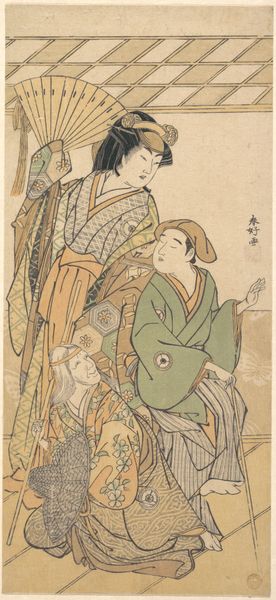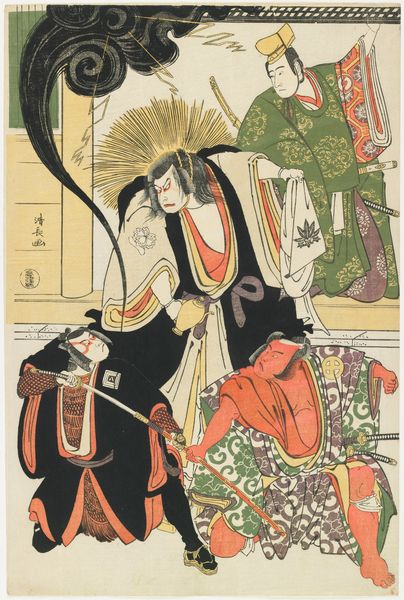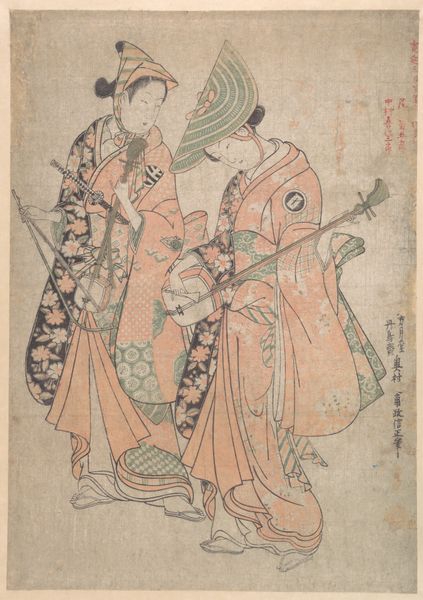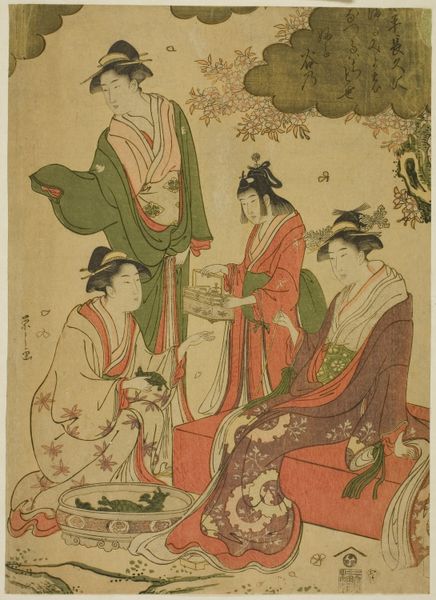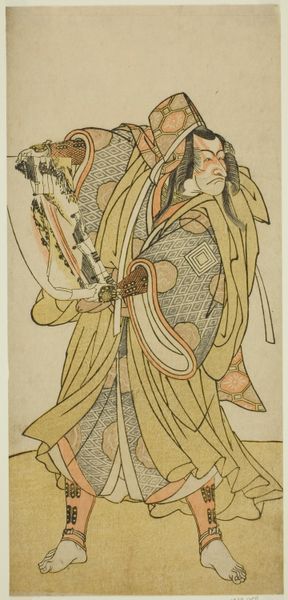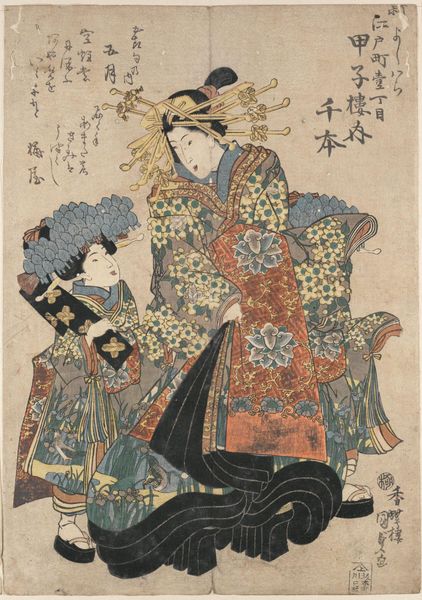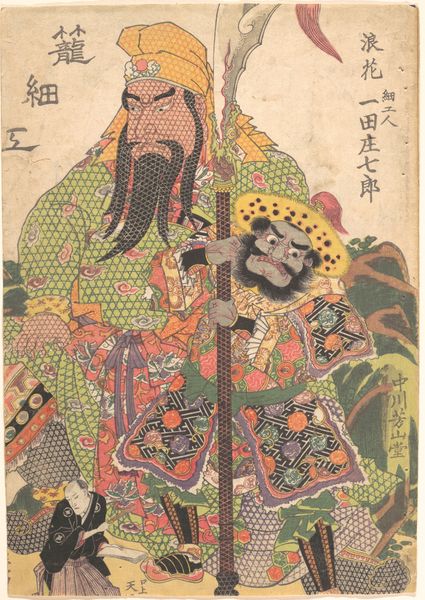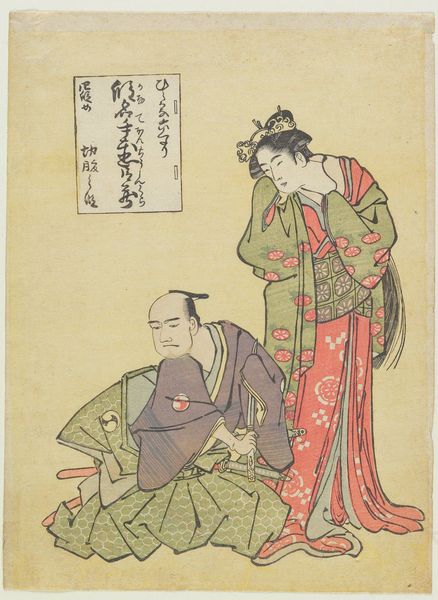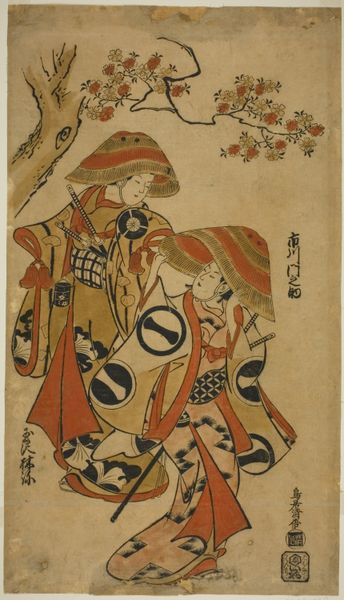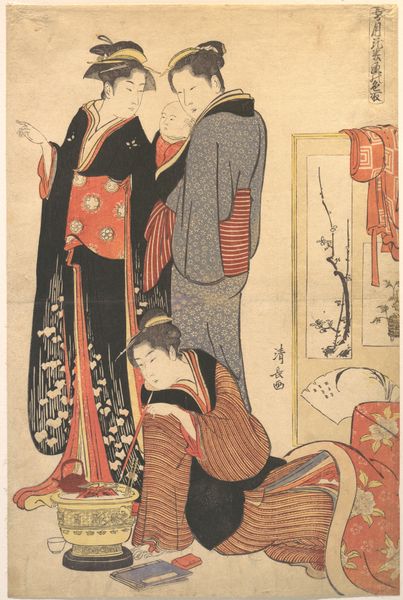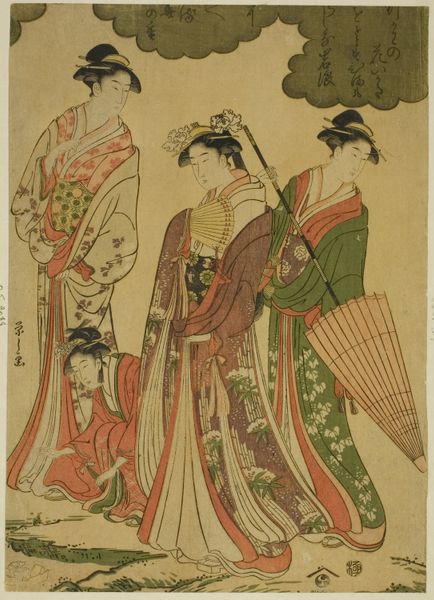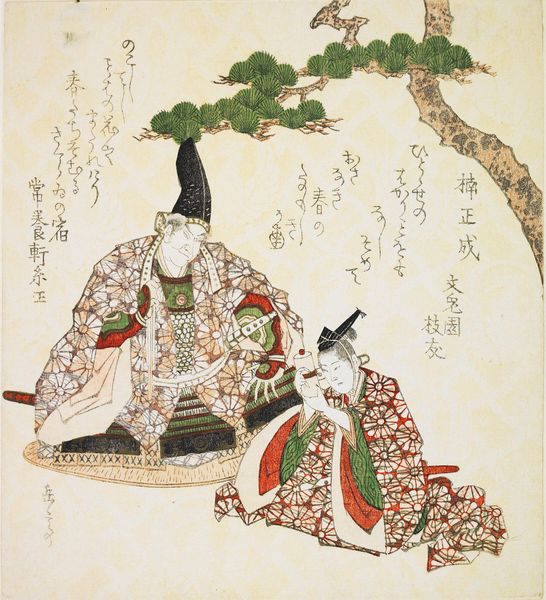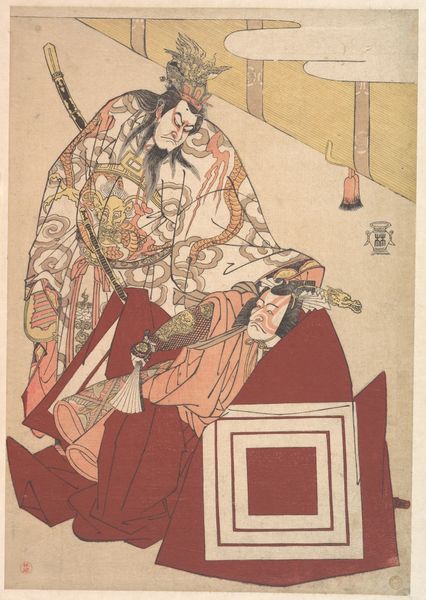
The Actors Ichikawa Danjuro V as Hige no Ikyu, Nakamura Riko as Agemaki, and Ichikawa Ebizo as Agemaki's attendant in the play "Sukeroku Yukari no Edozakura" at the Nakamura Theater in the third month, 1784 1784
0:00
0:00
print, woodblock-print
#
portrait
# print
#
asian-art
#
ukiyo-e
#
figuration
#
woodblock-print
#
genre-painting
Dimensions: 35.4 × 24.4 cm (right sheet)
Copyright: Public Domain
Editor: Here we have "The Actors Ichikawa Danjuro V as Hige no Ikyu, Nakamura Riko as Agemaki, and Ichikawa Ebizo as Agemaki's attendant in the play 'Sukeroku Yukari no Edozakura'," a woodblock print made in 1784 by Torii Kiyonaga. The detail in the figures’ costumes is incredible. What draws your eye to this particular ukiyo-e print? Curator: My attention immediately goes to the means of production and circulation. This wasn’t high art for an elite audience. Woodblock prints democratized access to imagery. Consider the labor involved: the artist, the block carver, the printer. These were skilled craftspeople producing multiples, and that changed how art functioned in society. Editor: So, you see the printmaking process itself as the most significant element? Curator: Absolutely. Look at the registration of the colors. It tells a story of careful labor. And beyond the act of making, think about the social context. These actors, portraying characters from a popular play, became commodities. The print enabled the consumption of celebrity and spectacle, collapsing the boundaries between art and entertainment. Editor: It’s interesting to think about actors as commodities in that era, amplified by printmaking. But wouldn’t the artistry still be paramount? The elegant lines, the composition… Curator: Of course, technique matters. But focusing solely on artistic genius obscures the material conditions that allowed this image to exist and circulate. The availability of paper, pigments, the established networks of distribution – all of these factors shaped what we see. Think of how mass production impacts contemporary consumption. Editor: So, it's not just the ‘what’ but the ‘how’ and ‘why’ that define the piece? It opens a door to broader historical understanding. Curator: Precisely! By looking at process and materiality, we challenge traditional notions of art and recognize the labor, the technology, and the social forces embedded in every image. Editor: This approach highlights aspects I would have overlooked. Thanks for opening my eyes!
Comments
No comments
Be the first to comment and join the conversation on the ultimate creative platform.
